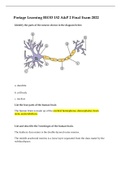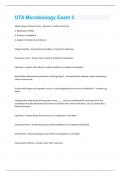Samenvatting
Summary Food for Thought questions & Nummerical Exercises
- Instelling
- Universiteit Utrecht (UU)
This document provides you (almost) all answers of the Food for Thought and Numerical Exercises given during the lectures. When learning these answers, you should be well prepared for the exam. I have used this document to prepare myself and passed with an 8,2. Good luck!
[Meer zien]













